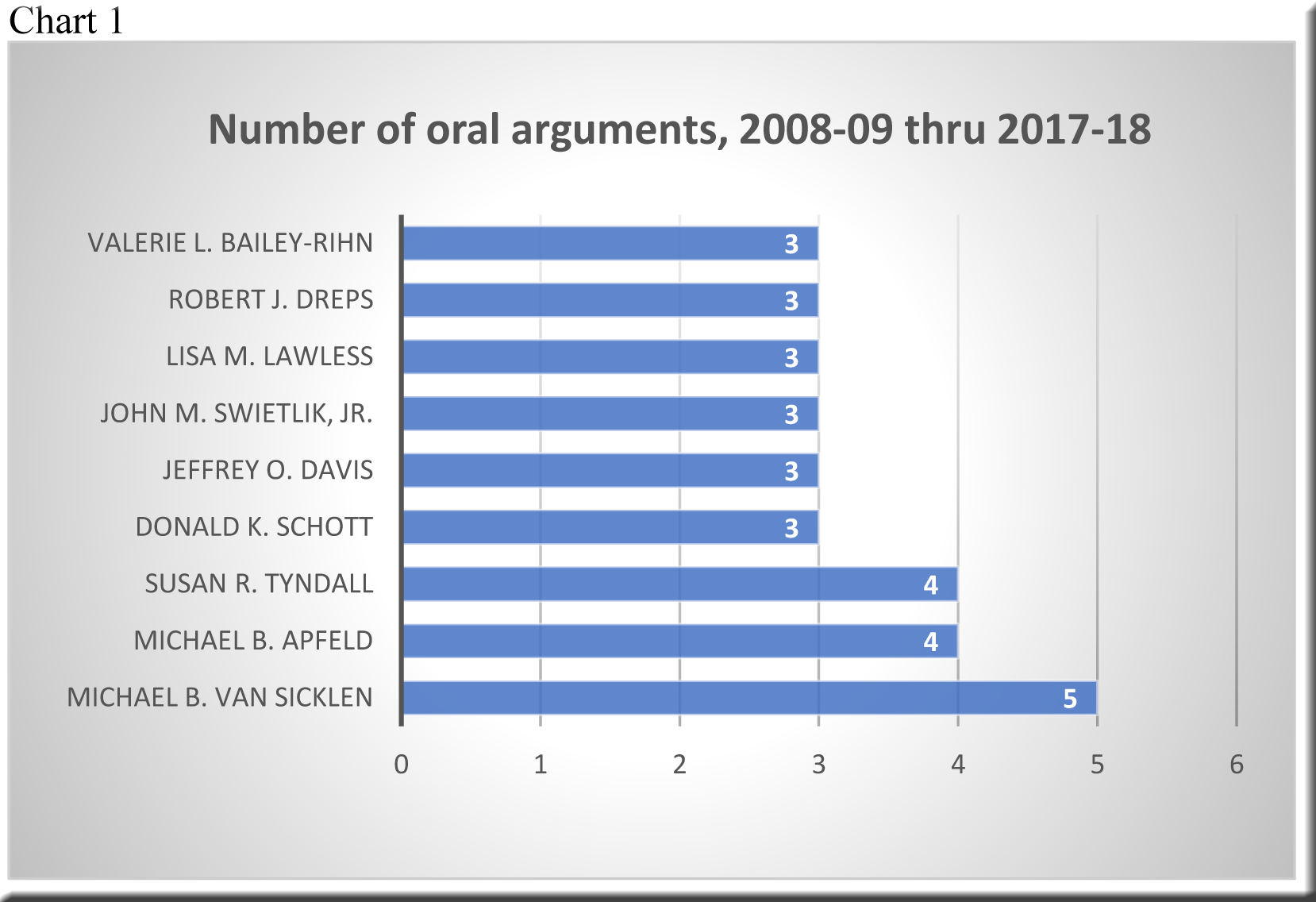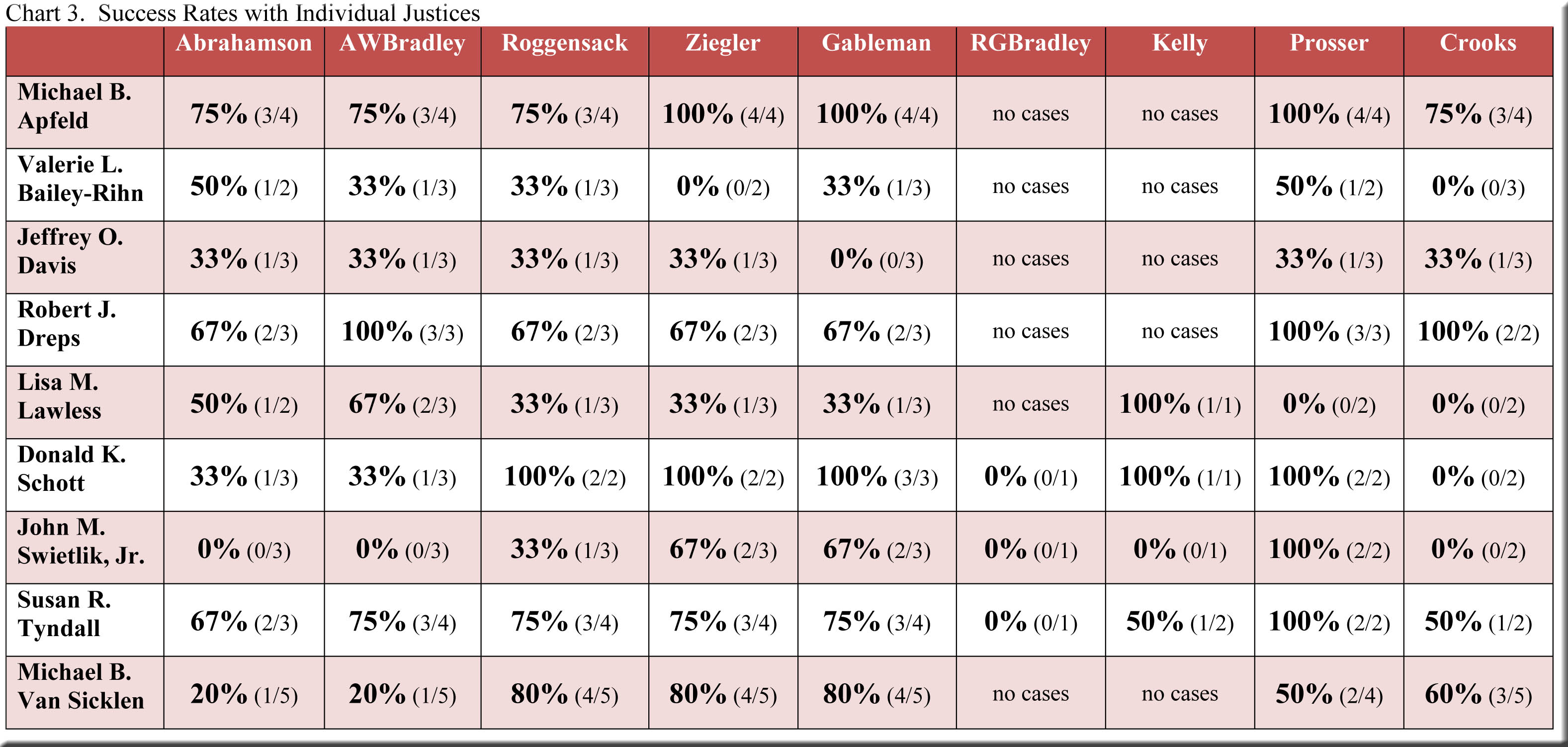Following a recent post on success rates of 15 private firms responsible for the most oral arguments at the Wisconsin Supreme Court over the past ten years, we turn our attention to the attorneys from these firms who appeared most frequently. We’ll see how often they achieved favorable outcomes and how they fared with each of the justices individually.
In accordance with the procedure adopted in the previous post,[1] I omitted a small number of decisions and then identified the lawyers who delivered at least three oral arguments from the batch of roughly 170 cases that remained. Chart 1 presents this set of the most active attorneys from the 15 firms.
(Click on the charts to enlarge them.)
Next, we ascertain how frequently the residents of Chart 1 attained favorable results in their cases. Toward this end, Chart 2 supplies a pair of indicators for each attorney—blue bars showing the number of successful outcomes, and orange bars the percentage that these successes represented of a lawyer’s total number of oral arguments. Although every attorney recorded at least one victory, Michael Apfeld, Susan Tyndall, and Michael Van Sicklen excelled in this regard. (I did not include attorneys Donald Schott and Robert Dreps in Chart 2, because some of their cases yielded 3-3 per curiam decisions—two for Schott and one for Dreps).
At a more granular level, we can specify how frequently the attorneys won each individual justice’s vote—where several achievements stand out. For example, given the court’s polarization, it was no mean feat to gain the support of conservatives (especially Justices Roggensack, Ziegler, and Gableman) and also liberals (Justices Abrahamson and A.W. Bradley) at the same time. As displayed in Chart 3, attorneys Apfeld, Dreps, and Tyndall distinguished themselves at this challenge.[2]
Some lawyers significantly outperformed the overall averages for their own firms with regard to certain clusters of justices. This was the case with attorneys Apfeld, Schott, Tyndall, and Van Sicklen, for instance—all of whom were markedly more successful than their firms as a whole with the conservative trio of Justices Roggensack, Ziegler, and Gableman. Meanwhile, attorney Lisa Lawless exceeded her firm’s average of favorable votes from the court’s two liberal members by a larger margin than did any other lawyer featured here. These conclusions may be reached by viewing Chart 3 along with the corresponding chart in the previous post—which also enables other comparisons of lawyers and their firms.
[1] I excluded cases in which a lawyer delivered an oral argument as an amicus party, and a handful of cases in which a fragmented ruling made it too difficult to classify the outcome as favorable or unfavorable for a lawyer’s client.
When a lawyer prevailed on certain issues but not others, I counted the outcome as favorable (or unfavorable) if it seemed clear that the lawyer won (or lost) on the issues of greatest importance—a subjective call required in only a very small number of cases.
We are considering cases decided during the 10 terms under review. In other words, if oral argument occurred during 2017-18, but the case was not decided until 2018-19, it is not included in this post.
Oral arguments in cases that resulted in 3-3 per curiam decisions are included in Chart 1—and Chart 3, as long as the court indicated how each of the justices voted—but not Chart 2.
[2] Justices RG Bradley and Kelly have not been on the court long enough to participate in many cases, and thus their results in Chart 3 should be considered with particular caution.



Speak Your Mind